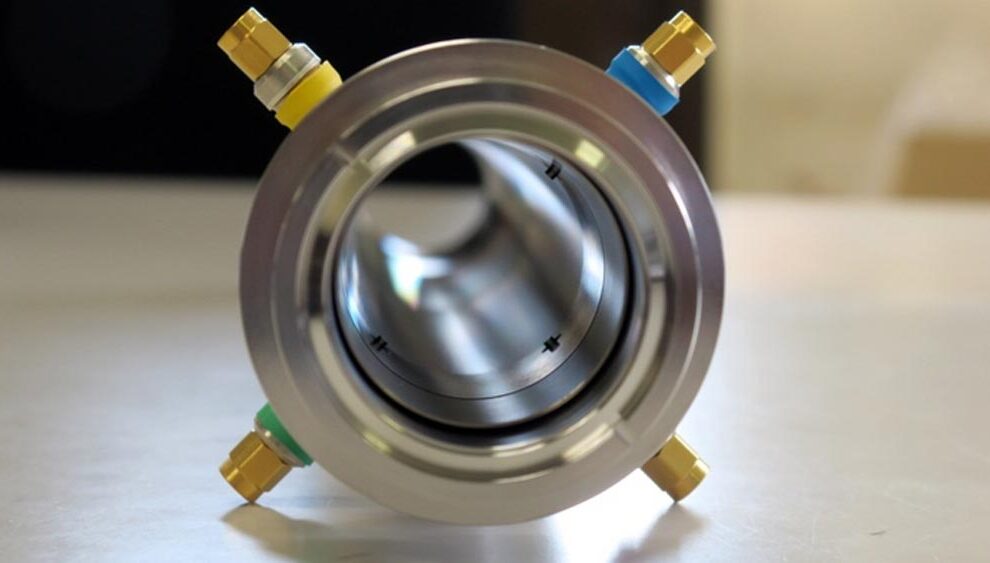
First Direct Observation of Electron-Positron Capture Process

Wideband beam monitor with four rod antennas located at every 90 degrees
Credit: KEK
Positrons can be produced by bombarding high-current and high-energy electrons into a target made of heavy metal, such as tungsten.
However, not only positrons but also substantially equal numbers of electrons are produced in the target and they are simultaneously captured by electric and magnetic forces in the positron capture section, which is subsequently located after the target. Positrons are separated from electrons by magnetic force just after the capture section.
It is very difficult to independently detect positrons and electrons at the same time in the capture section so far. There are three difficulties to clearly detect them because of radiation-hard environment, little marginal space to install any beam monitors, and to separately detect positrons and electrons with very short time interval.
A team led by Prof. Tsuyoshi Suwada of KEK successfully installed new type of beam monitors into the SuperKEKB positron source. “The idea is to use a wideband beam monitor with a simple rod antenna,” says Suwada. “This idea is well-known in radio-frequency wave detection techniques. It was successfully experimented with the use of charged particle beams in high-energy accelerators, such as electron and positron beams for the first time at KEK. It turns out that an electron (or positron) beam clearly precedes a positron (or electron) beam with some time interval in time domain in the capture section.”
“Interestingly, what we found in experiments is that the time interval between electrons and positrons intricately variates in the range of 20 to 280 ps on average, and their travelling order is interchanged depending on the operation condition of the capture section. At the capture phase of 0 deg, the electrons with minus signal polarity clearly precedes the positrons with plus signal polarity, and the time interval is 137 ps. At the capture phase of 180 deg, the positrons with plus signal polarity clearly precedes the electrons with minus signal polarity, and the time interval is 140 ps. It turns out that the time interval between the electrons and positrons variates intricately in time domain and the travelling order is interchanged at the capture phases of 50 and 230 degree.” added Suwada. Applied into the SuperKEKB, enhanced capture efficiency of positrons helped the SuperKEKB to improve its world record luminosity.
Useful information is about the radiation damage of the beam monitor system to be obtained at the injector linac in its longer-term operation. “We believe that this new beam monitor could be applied in the next-generation of B-factories and future e+e- linear colliders,” Suwada concluded. This work has been done through the collaborative efforts of Dr. Muhammad Abdul Rehman of KEK (present affiliation is IHEP).
This research is published last month in Scientific Reports:
https://www.nature.com/articles/s41598-022-22030-5
Journal: Scientific Reports
DOI: 10.1038/s41598-022-22030-5
Method of Research: Experimental study
Subject of Research: Not applicable
Article Title: Direct observation of positron capture process at the positron source of the superKEKB B-factory
Article Publication Date: 3-Nov-2022
Media Contact
Toshihiko Katsuda
High Energy Accelerator Research Organization/KEK
press@kek.jp












